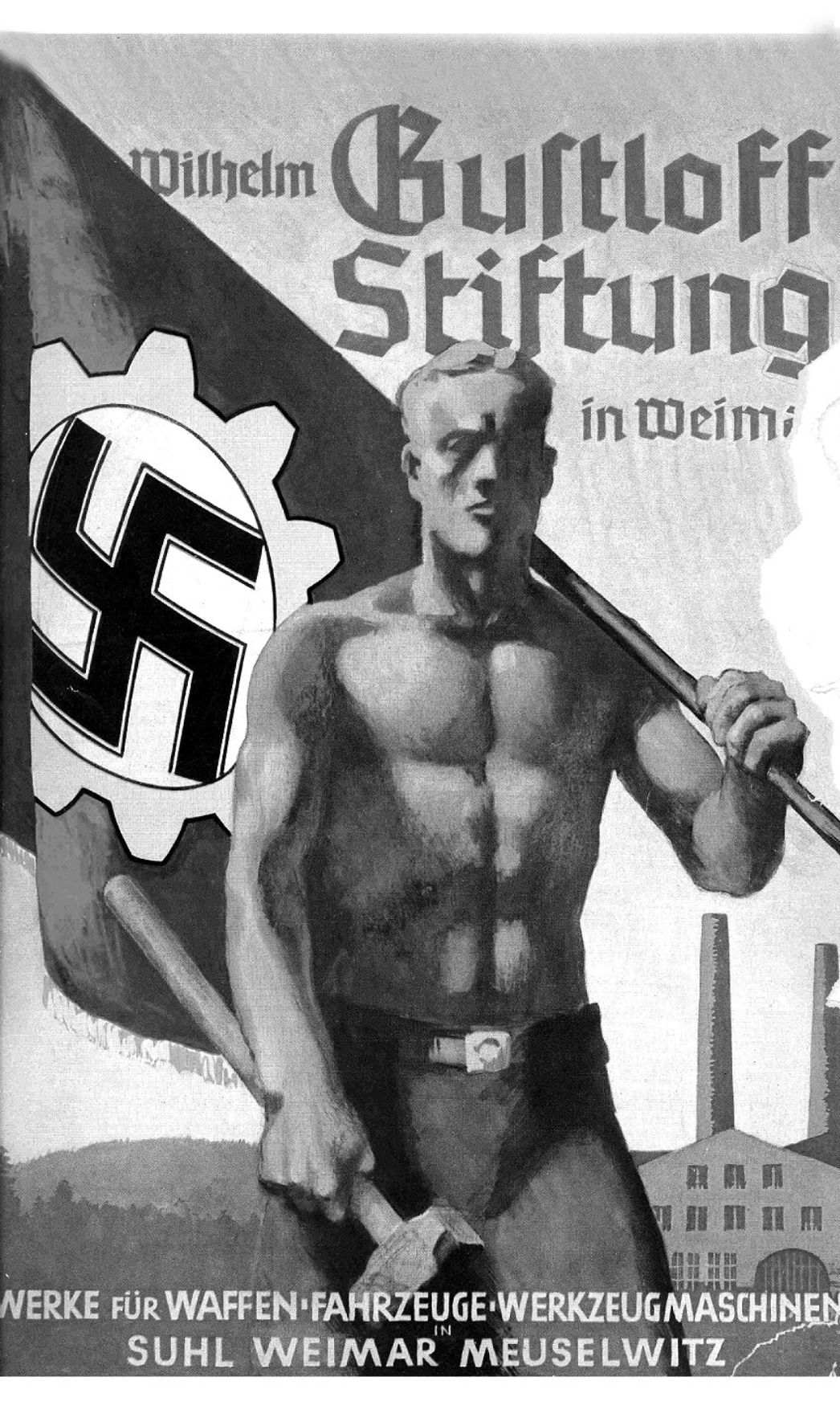
The Wilhelm Gustloff Foundation business empire, named after the former head of the NSDAP's foreign organisation in Switzerland, was created by the expropriation of the Jewish company Simson in Suhl at the end of 1935. The foundation charter of the "National Socialist model company" enshrined the political orientation and ideological training of workers from the very beginning. The foundation took over the largest German wagon factory in Weimar in 1936 and renamed it Fritz-Sauckel-Werk (Gustloff-Werk I) on 1 May 1937, the "bank holidays of the German people", after the foundation leader and Gauleiter of Thuringia. At the same time, production-related expansion and conversion work began on the site. The modern production areas of the anti-aircraft gun production were housed in two new factory halls each 120 metres in length. The construction of a modern machine tool factory began in 1939, the bricks for which were supplied by the Buchenwald subcamp Berlstedt. A second weapons factory of the foundation, Gustloff-Werk II in Buchenwald, was built from 1942.
From this year onwards, the SS also rented out the prisoners' labor to the Fritz Sauckel factory in Weimar. They worked six days a week in day and night shifts of ten to twelve hours in production. At first, the prisoners built 20 barracks for two "special prisoner camps" on the factory premises themselves. The camps were surrounded by an electrically charged fence and nine watchtowers. SS men from Buchenwald were responsible for guarding them. The prisoners often worked closely together with prisoners of war, forced laborers and German civilian workers. This occasionally led to bartering. For prisoners, food could be life-saving. Other workers played on their better position vis-à-vis the prisoners, reporting them to the SS or abusing them themselves. At the beginning of 1945, the entire workforce of the Fritz Sauckel factory consisted of around 6,000 workers. In addition to only 1,800 German civilian workers, around 2,500 concentration camp prisoners, forced laborers and prisoners of war were employed. Since the forced laborers, prisoners of war and concentration camp inmates had to continue working during air raids, at least 600, including 412 concentration camp inmates, died in the heavy bombing raid on February 9, 1945. After the end of the war, the company developed into one of the largest manufacturers of agricultural machinery in the GDR. Near the former factory entrance on the corner of Kromsdorfer Straße and Andersenstraße, there is a memorial stone erected in 1956 for the "deportees of all nations who perished in Weimar during the bombing raid on February 9, 1945". The plaque does not commemorate the two subcamps of Buchenwald concentration camp.
